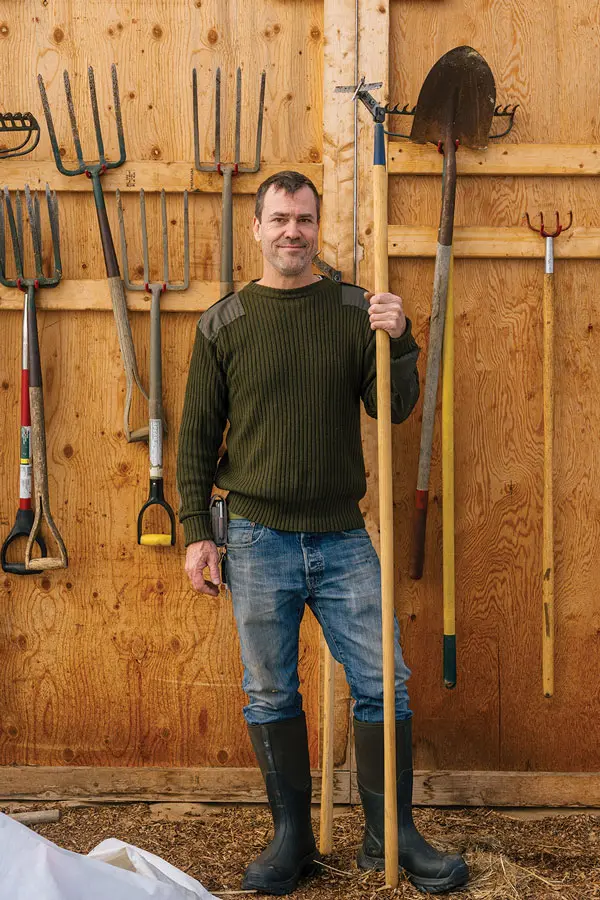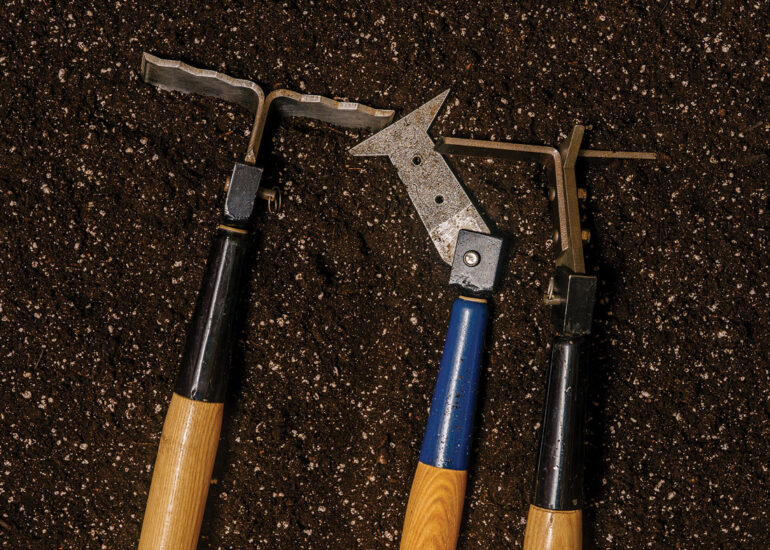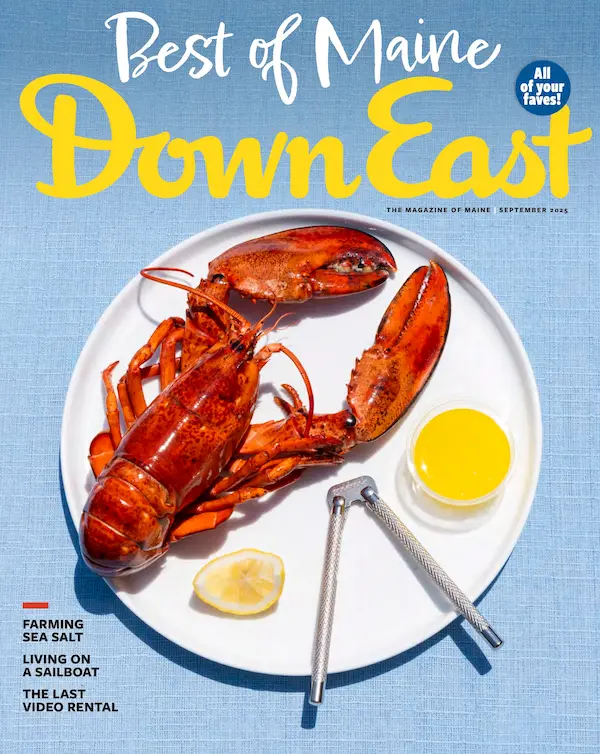By Will Grunewald
Photos by Kody Theriault
From our April 2025 issue
Since time immemorial, the humble hoe has been an essential implement of agriculture (and, consequently, civilization). Both the ancient Sumerians and ancient Chinese believed deities had conferred hoes upon mankind. Fast-forward to the present to find hoes leaning against sheds around the globe and featuring in innumerable YouTube and TikTok videos that tout their virtues — “Know Your Garden Hoe” or “What Your Favorite Kind of Hoe?” In Mozambique, a hoe even adorns the national flag.
Hoes have taken many forms over the millennia, but always as slight variations on a simple theme: a blade of rock or wood or metal attached to a long, usually wooden handle, employed in loosening soil, digging furrows, and cutting through weeds. Today, shopping for a hoe usually means choosing between two broad styles. The draw hoe is what most people will picture when they think of a hoe, the classic flat steel blade set at a 90-degree angle to its handle. The common alternative is the stirrup hoe (also known as the hoop hoe or scuffle hoe, among various other sobriquets). Its blade forms, approximately, a hollow rectangle, which gives the appearance of a stirrup, and it’s hinged where it meets the handle so as to oscillate slightly while the lower part of the stirrup is pushed and pulled through soil.
The latter style is less versatile — not good for digging, but excellent at slicing weeds just under the surface. That makes it especially useful to organic farmers and gardeners, who often plant in close rows so that crops grow to shade out weeds. Even then, weeding between rows is necessary, and the stirrup hoe does the job.
Since these hoes were born of thousands of years of evolution and tinkering, one might assume they’ve reached their final form. Belfast resident Brian Hughes, however, saw room for improvement. Hughes has a background in organic farming (as well as landscape architecture and carpentry) and often found that weeding with stirrup hoes risked damaging closely growing crops with the portion of the blade that remains above ground. “It can feel like you’re driving a box truck down a narrow alleyway,” he says.
For years, he sketched ideas for new iterations. Then, he met Nat Bradshaw, owner of Bradshaw Machinery, in Searsport, who let him hang around the shop, sweeping and cleaning and learning. Hughes also took some machining classes at the Mid-Coast School of Technology, in Rockland, but he says Bradshaw’s thoughtful feedback is what turned his ideas into a reality.


In 2022, Hughes founded Midcoast Tool & Design and started selling his hoes. He dubbed his first model The Ripper. It has a thin, oscillating blade, for getting at weeds in tight spaces (or for making a landscaping edge or garden furrow). The Bat Wing came next, with the same central blade as The Ripper plus two blades extending at 90-degree angles from the bottom, something of a hybridization of the draw hoe and stirrup hoe, able to cut a wider path under the soil but without damaging surrounding crops. The most recent addition to the lineup is The Stinger, shaped similarly to the Bat Wing but lighter weight and with serrated blades that move through soil with less resistance.
Now, Hughes’s hoes are sold at the Coastal Maine Botanical Gardens shop, in Boothbay, Sheepscot General Store, in Whitefield, and the Green Store, in Belfast, but he likes when customers order from him and stop by to pick up a new hoe in person, giving him a chance to explain his curious-looking inventions. “If you’re a regular person,” he says, “there’s a little bit of a learning curve to understand these things.”
Every year, Hughes makes the bulk of his sales in just one weekend, at the late-summer Common Ground Country Fair, in Unity, where organic farmers and gardeners from around the state gather. He finds he doesn’t need to do much explaining there. “If you’re a farmer and you see these hoes,” he says, “you know what you’re looking at right away. You’re like, ‘Aha! I get why you did that!’”




